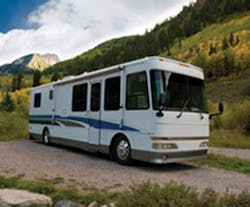One of the biggest complaints (and sometimes myths) about hydraulic systems is that they are noisy, and although this is not always true, noise in a hydraulic application is not a good thing. And sometimes, noise isn’t always audible, but more often, a vibration. As noise travels through the components the operator comes into contact with, the operator is exposed to these vibrations.
Vibrations may not sound like a big deal but after a few hours of constant exposure, the operator's hands become numb and with long term exposure, this vibration can cause nerve damage. Even just a few hours of exposure to vibration can have an impact on the body for a day or two.
Parker Parflex engineers continually work to reduce noise and create hoses with optimum safety features for operator handling. To eliminate noise, a thermoplastic fiber reinforced hose offers the greatest damping benefit. The hose is constructed using a variety of smooth bore polymer inner cores for a high degree of chemical compatibility, high strength fibers and a polymer jacket. Also, a fiber reinforced thermoplastic hose has an inherently higher VE rate than that of an equivalent bore wire reinforced rubber hose, resulting in a total lower quality factor (Q). A low value of Q indicates a high rate of energy loss relative to the stored energy of the resonator. So a low Q makes oscillations decay more quickly. Therefore, components and designs that reduce Q in a system are beneficial for reducing noise transmission.
And sometimes, applications you would never think of can really benefit from reduced noise, improved operator handling and increased safety.
One such example is on the power steering system of motor homes. No driver wants to feel vibrations running through their hands continuously on long treks across the country. In this case, the power steering pump was 35 ft. away from the steering actuator and the wire braided rubber hose routed between the pump and the motor picked up transmitted noise from hydraulic and other mechanical components to the steering column.
In this example, the fluid and system born noise was extensive. However, the long thermoplastic hose assemblies routed in the system enabled sufficient noise dampening.
The 53DM series are rated for 3000 psi and offer a low coefficient of friction, flexibility in cold temperatures, and a good bend radius. They are rated for temperatures from –70° to 212°F (–57° to 100°C).
The 510C hose are rated for 1000 to 3000 psi and offer high abrasion resistance and flexibility. They are rated for temperatures from -40° to 212°F (-40° to 100°C), with a 135°F (57°C) limitation with synthetic hydraulic fluids and water-based fluids.
Visit www.parker.com for more details on these and other Parflex hoses.
About the Author

Leaders relevant to this article:




